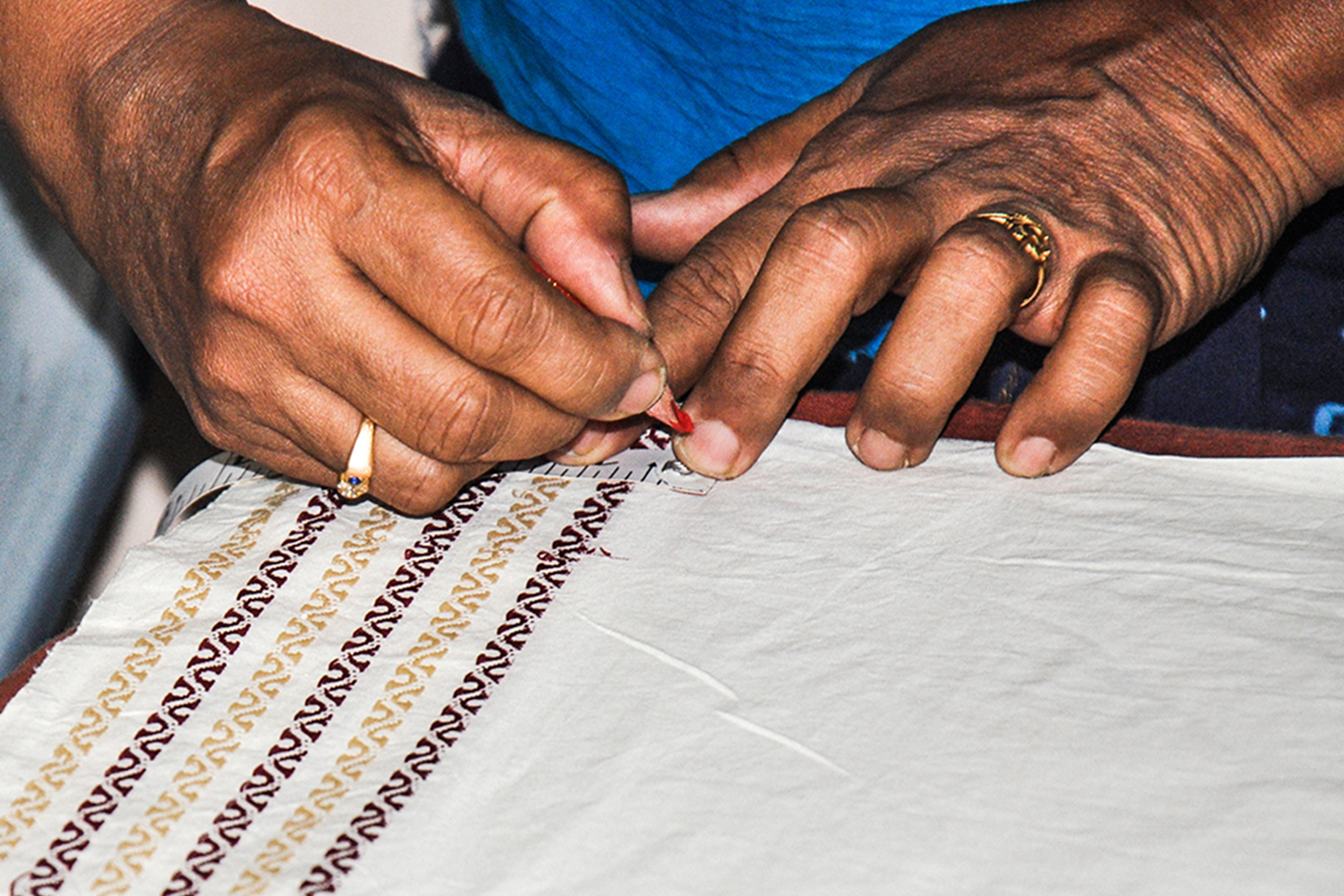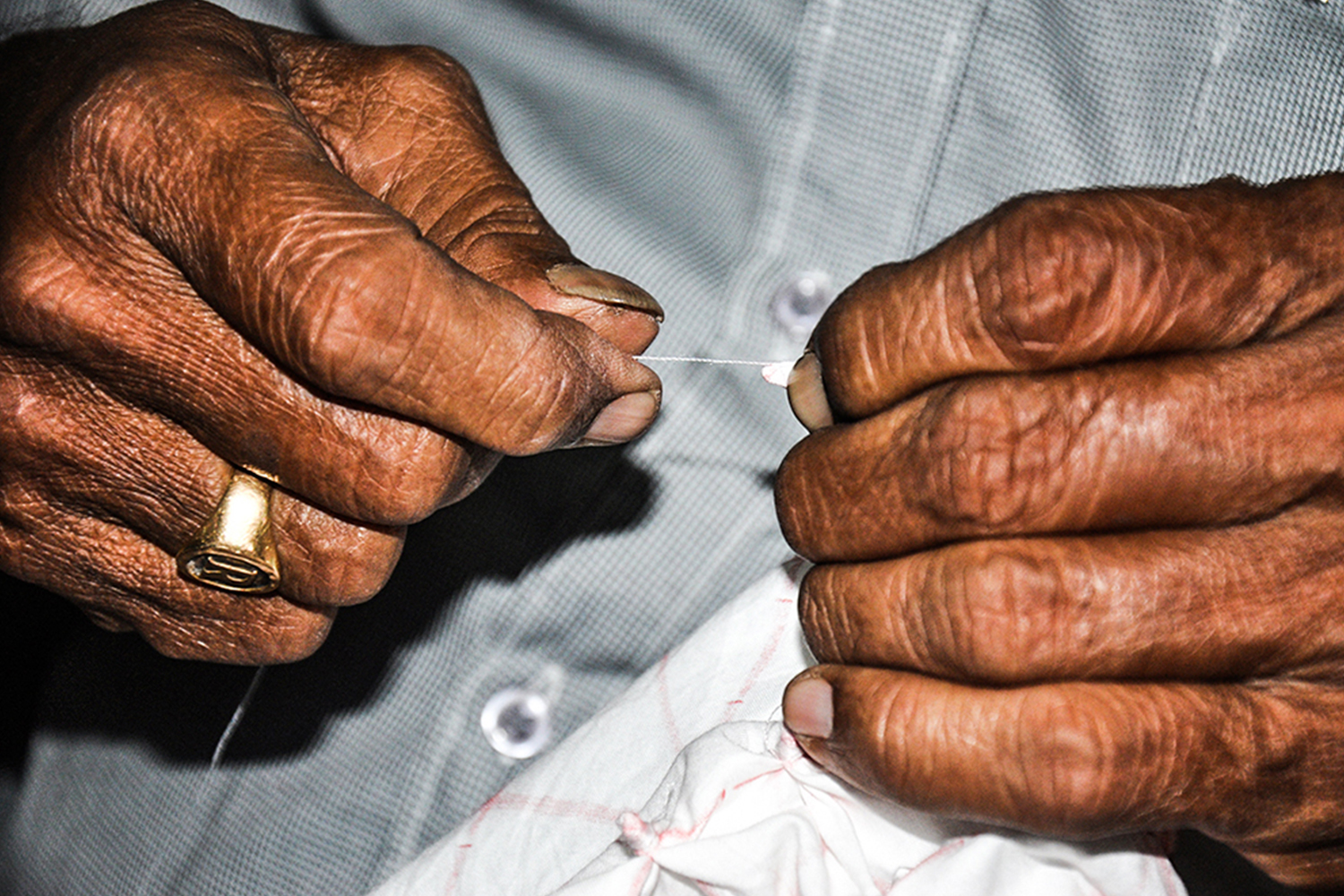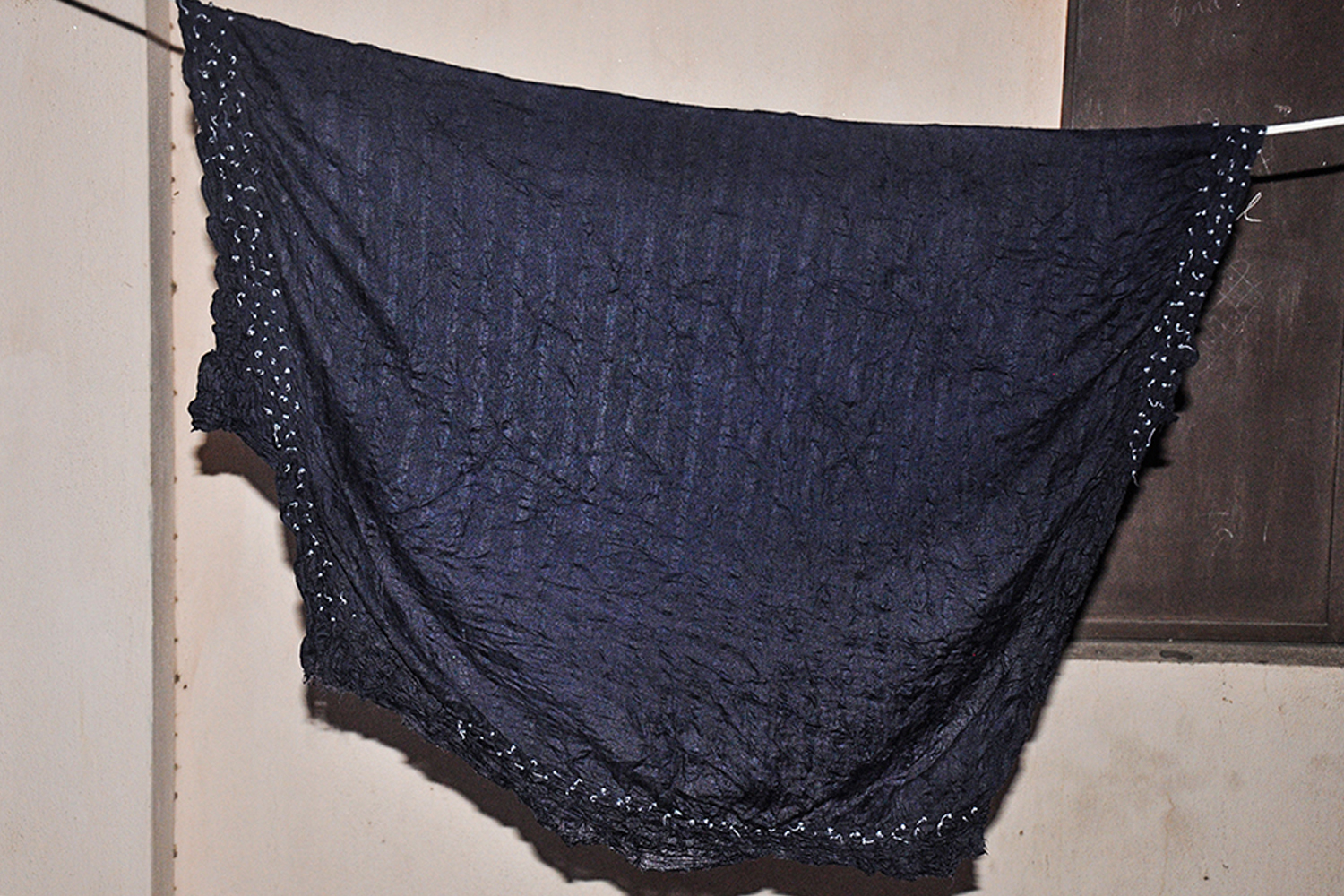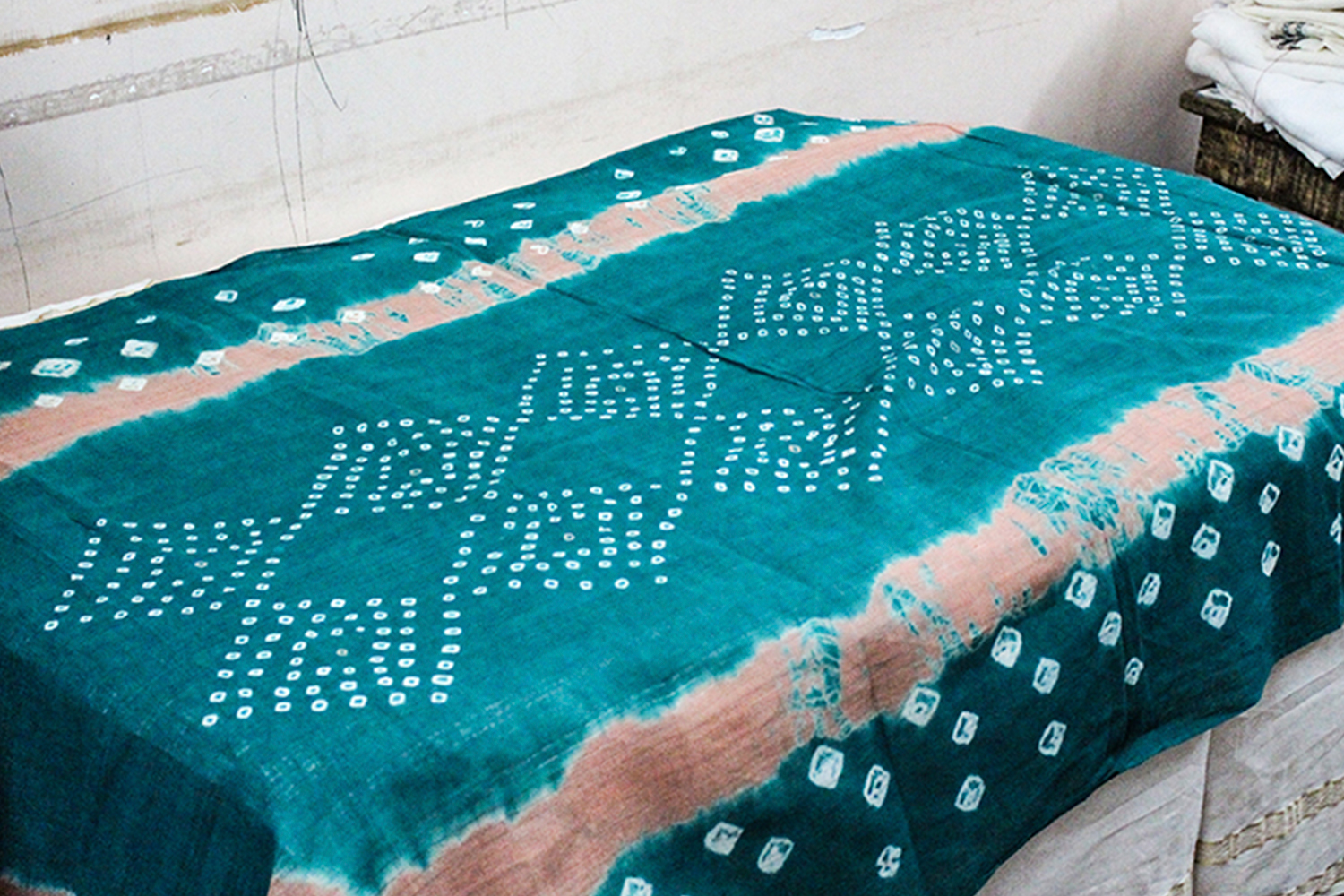A form of tie-resist-dyeing practised in the Madurai region of Tamil Nadu, sungudi has close cultural and technical links with the bandhani technique and is considered to be a variation of chunari, the dotted pattern of a bandhani textile. It is also known as sungadi, sungdi, chungadi and junnadi.
Sungudi is practised by the Saurashtrian community of weavers and dyers settled in Madurai, who are also known as patnulkarar (derived from the Tamil pat, meaning “silk,” and nul, meaning “thread”). The artisans are believed to have migrated to the region due to conflicts in Saurashtra as well as drawn by patronage and incentives offered by rulers such as Tirumala Nayaka of Madurai (r. 1623–56).
The textile popularly associated with the sungudi technique is the sungudi saree, which is between 5–8 metres long and features a narrow zari border. Each saree may take between ten and fifteen days when produced by the traditional method. The traditional process uses both the tie-resist and clamp-resist techniques of dyeing, locally known as pulli katradhu and katta katradhu, respectively. The base fabric is a plain, woven cotton saree made of 100s warp and 80s weft. The fabric is bleached and the pattern mapped onto the fabric either with blocks or by hand. The marked points are held between the fingernails and tightly bound with thread — a process that is usually carried out by women; for an 8-metre saree, depending on the intricacy of the pattern, as many as twenty thousand knots may be tied. To dye the main field of the saree, the pallu — which is usually given a contrasting colour to the main field — is clamped using wooden blocks known as jodi kattai. The fabric is then dyed, rinsed and dried, after which it may undergo further resist-tying and dyeing, depending on the required colours. The pallu is dyed after clamp-resisting the main field. Once the process is completed, the knots are opened to reveal the dotted pattern.
A more contemporary method of production of sungudi sarees is the use of wax-resist dyeing, which involves reserving the pattern on the main field using wax that is transferred with wooden blocks. The cloth is then cold-dyed and, once the dyeing process is completed, boiled to remove the wax. The variation in the method is likely the result of a decline in the number of skilled artisans familiar with tying the traditional knots. The pallu may be embellished using the silkscreen printing process. The use of natural dyes in the traditional process has also dwindled with the emergence of synthetic dyes.













